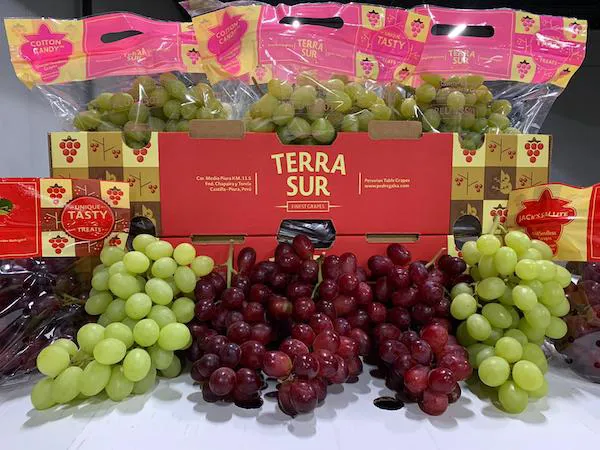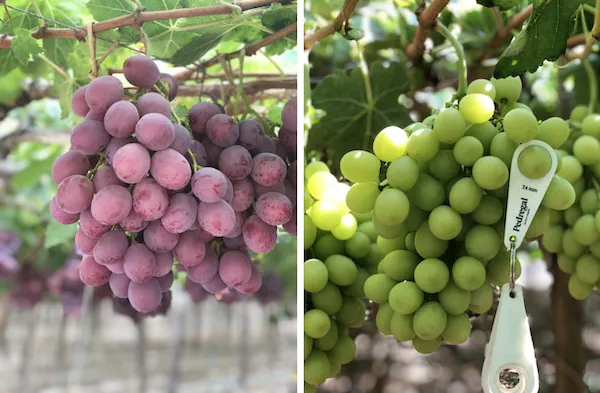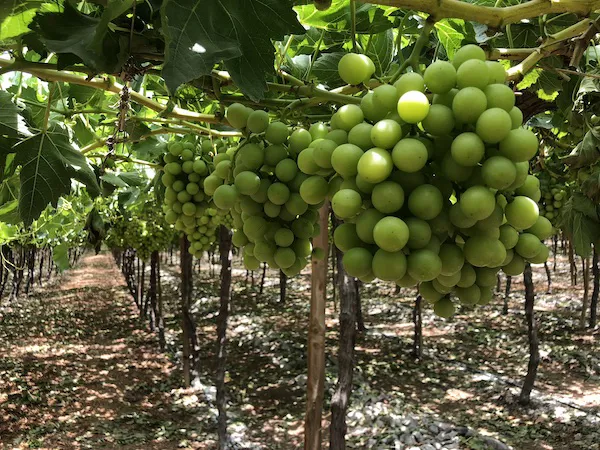Peru is preparing for their upcoming grape harvest and growers are expecting to see a good transition from the United States’ domestic crop to the imported crop. “The California crop is experiencing good movement this season, just about to come to an end, which should make for a good and natural transition for the Peruvian grapes, just coming out now,” says Andre Fattore of Terrasur Imports.

California’s season could end early
As California’s grape crop wraps up, Peru is getting ready to supply the US market. “It looks like California’s season will finish early this year and that there will be lower volumes than last year,” says Fattore. “Another factor that has been helping to move the California crop is the US Government’s efforts to help farmers in the pandemic with programs like that “Farmers to Families Food Box Program”, by means of which the lower categories of grapes are being cleaned up quite nicely and the growers are able to supply the retailers with the premium quality grapes. This has been helping the movement for the Californian growers and will help Peru to enter a cleaner market.”
Peru’s first shipments will be of the green seedless variety. “In California, there are not yet very many late varieties being grown for the green seedless grapes, so Peru is able to enter the market with these more quickly than for the red seedless grapes. Peru will most likely start with the green seedless volumes in December, and then add the red seedless grapes in January,” Fattore explains.

Increase in Peruvian volumes forecasted
So far, the forecast of the coming Peruvian grape season looks good, Fattore shares. “Overall for the country, Peru is expecting a big growth compared with last year’s,” he says. “Last year, Peru sent between 48 and 49 million boxes, and this year the forecast is for 54-56 million boxes. These will be mainly seedless grapes – the expansion of the seedless varieties has gone up very quickly here. 90% of Peru’s production used to be Red Globes, but now that only accounts for 30% of the production. The main growth is based on the Sweet Globe variety: last year there were 5.5 million boxes and this year around 7.5 million boxes are expected. Besides the Sweet Globe’s, the Allison, Timco, and Sweet Celebration varieties will be the main growth on the red seedless varieties for Peru this year.”
For TerraSur imports, specifically, they are also expecting a growth in volume this year. “On our Timpson variety, an SNFL variety, which is Pedregal’s exclusive variety in Peru, we are seeing big growth in programs with our retail partners that demand a tastier, exclusive and specially grown variety. Last year, as TerraSur Imports, we sent 1.8 million boxes to the US, This year we are expecting to do more than 2 million boxes and we are working hard to consolidate our operation, bringing the highest quality grapes to the market, distributing in the most efficient way.” Fattore shares.

The big question: What will China’s market look like?
The Chinese market is also a very important destination for Peruvian grapes, but this year Fattore is unsure what the market will look like. “The Red Globes are still very popular on the Chinese market, and while we have seen an increase in demand for the green seedless grapes, the overall Chinese market isn’t big on the seedless grapes yet. We have seen that they like the Timpsons, Sweet Globes and the Autumn Crisps. Still, especially because the transit time to China is 30-35 days, compared with 17 days to the US, in combination with the high quality demanded by the Chinese market, there are not a lot of growers that comply with all the quality standards required and are able to export to China. It could be that, if quality grape conditions are optimal, we could see a decrease of volumes of green seedless sent to the US, diverted to China. However, we can’t really know that until we are harvesting. For now, that’s a big question mark. In any case, Pedregal will certainly comply with all our retail partners’ supply agreements,” Fattore concludes.
 For more information:
For more information:
Andre Fattore
VP Sales
TerraSur Imports
Email: [email protected]
